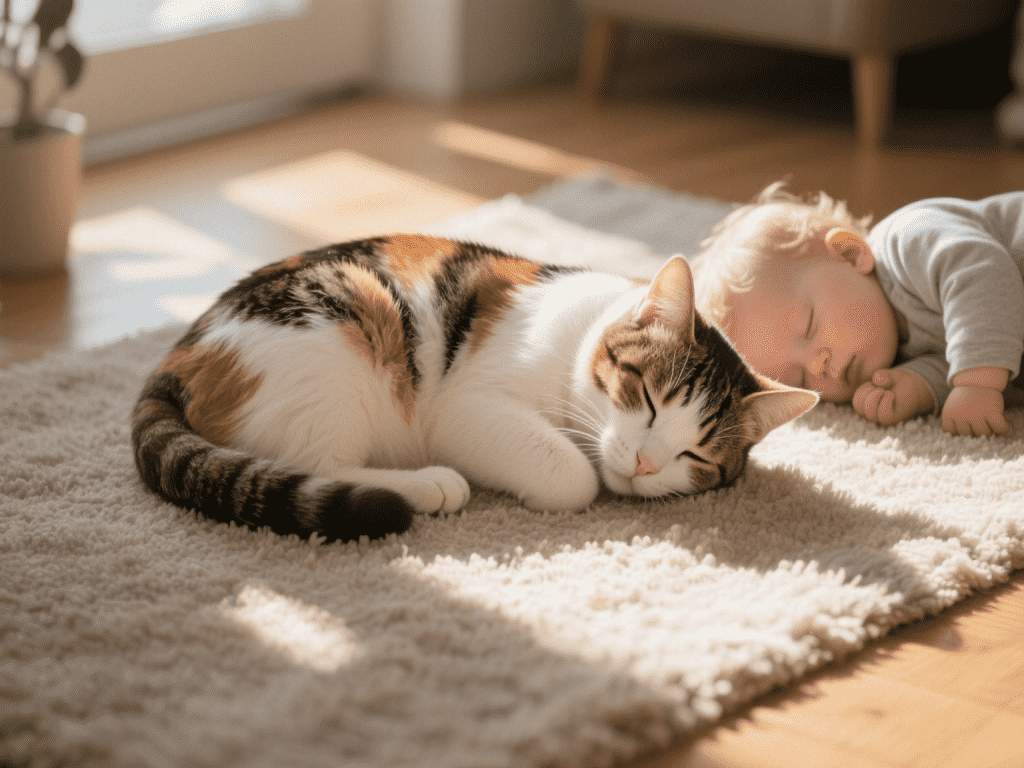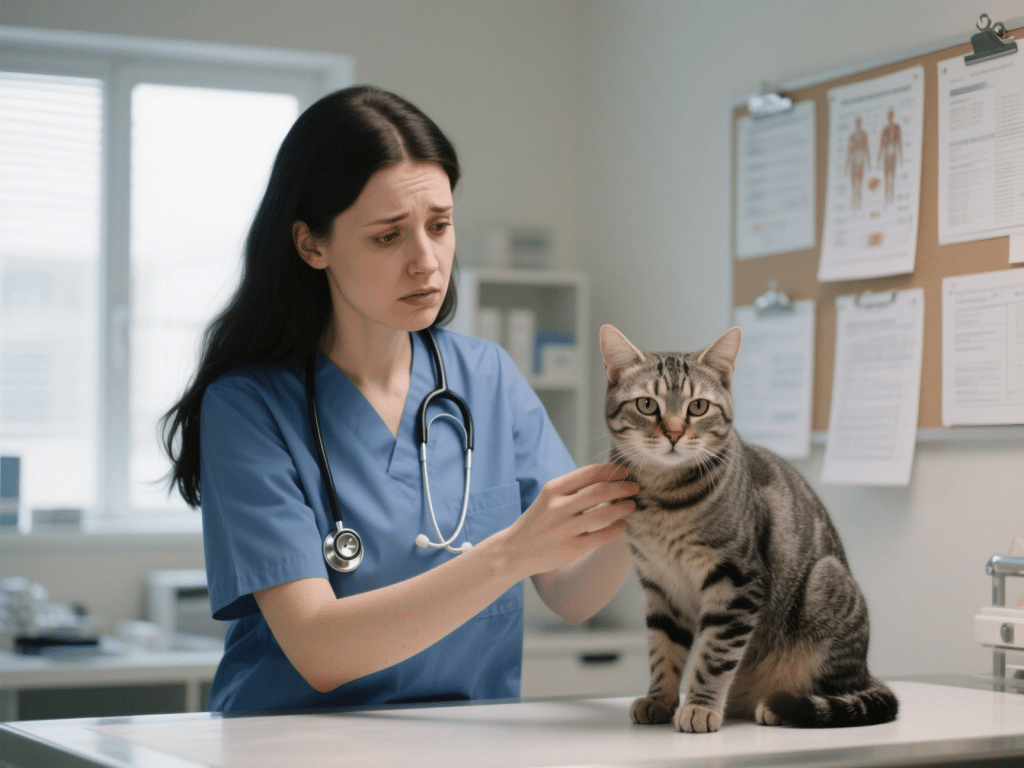Essential Cat Dental Care Tips for a Healthy Feline Smile
Introduction
Good dental health is crucial for your cat’s overall well-being. Just like humans, felines can suffer from plaque buildup, gingivitis, and periodontal disease if their teeth are not cared for regularly. Neglecting dental hygiene can lead to pain, difficulty eating, and even systemic infections that affect the heart or kidneys. This guide provides practical, evidence-based advice to help you maintain your cat’s oral health and ensure a comfortable, happy life for your feline companion.
Why Dental Care Matters
Reducing Pain and Discomfort
Cats are masters at hiding pain. Even if your cat seems unaffected, tartar accumulation and gum inflammation can cause chronic discomfort. Early intervention prevents severe periodontal disease, which could lead to tooth loss or bone damage.
Preventing Systemic Complications
Bacteria from untreated dental conditions can enter the bloodstream and travel to vital organs, potentially causing heart valve damage or kidney infections. Regular dental maintenance minimizes this risk and contributes to your cat’s long-term health.
Recognizing Common Dental Issues
Plaque and Tartar Accumulation
Plaque is a sticky film of bacteria that forms on teeth.
Tartar (calculus) is hardened plaque that bonds to enamel and requires professional cleaning.
Signs to watch for:
Brownish or yellowish deposits near gum lines
Red or swollen gums
Foul odor (halitosis)
Gingivitis and Periodontal Disease
Gingivitis appears as inflammation of the gums and is reversible with care.
Periodontal disease involves deeper tissues and can lead to tooth loss if untreated.
Watch for:
Bleeding when you touch the gums gently
Reluctance to eat harder food
Pawing at the mouth
Tooth Fractures and Resorption
Tooth fractures can occur from trauma or chewing on hard objects. Resorptive lesions (FORLs) are common in older cats and lead to tooth root breakdown.
Signs:
Sudden reluctance to chew
Excessive drooling
Visible holes or missing enamel
Daily Dental Hygiene Practices
Brushing Your Cat’s Teeth
Choose a Cat-Specific Toothbrush and Toothpaste
Use a soft-bristled toothbrush designed for feline mouths.
Never use human toothpaste; choose enzymatic cat toothpaste with poultry flavor to make brushing more appealing.
Introduce Gradually
Start by letting your cat taste a small dab of toothpaste.
Gently lift the lip and rub the toothpaste on the teeth using your finger.
Once comfortable, transition to a toothbrush, brushing the outer surfaces in small circular motions.
Be Consistent
Aim for daily brushing—five minutes at most is sufficient.
Positive reinforcement (treats or praise) helps associate brushing with a pleasant experience.
Dental Wipes and Pads
Dental wipes offer a quick alternative when brushing isn’t possible.
Use a textured pad to rub the gum line and tooth surfaces, removing plaque physically.
Tip: Always follow the manufacturer’s instructions for proper technique and frequency.
Professional Dental Cleanings
Veterinary Examination and Cleaning
Annual Checkups: Schedule a yearly dental exam. Your veterinarian will assess gum health, teeth stability, and check for hidden lesions.
Anesthetic Cleaning: To remove tartar below the gumline safely, cats must be under anesthesia. Full-mouth X-rays may be needed to detect problems not visible externally.
Post-Cleaning Care
Antibiotics or Pain Relief: If periodontal disease was advanced, your veterinarian may prescribe medication.
Home-Care Plan: Based on the vet’s findings, adjust your at-home dental routine (frequency of brushing, special diets, or chew toys).
Choosing the Right Dental Products
Dental Diets and Treats
Prescription Dental Diets: These kibble formulas are designed to mechanically clean teeth as the cat chews. Check for VOHC (Veterinary Oral Health Council) approval.
Dental Chews: Many chews offer a combination of mechanical abrasion and chemical plaque control. Ensure treats are appropriately sized and hardened to avoid fractures.
Oral Rinses and Water Additives
Antiseptic rinses (e.g., chlorhexidine-based) reduce bacterial load.
Water additives can be added to your cat’s bowl daily. Always follow dosage guidelines closely.
Preventive Measures and Diet
Selecting a Balanced Diet
Feeding a nutrient-rich diet supports immune function, helping resist oral infections.
Provide dry and moist food to balance hydration and chewing action.
Safe Chew Toys
Choose chew toys specifically labeled as “safe for teeth.”
Avoid hard plastic or bones; splintering can lead to tooth fractures.
Monitoring and Early Intervention
Check your cat’s mouth weekly. Lift lips to inspect gums and teeth.
Notice any behavioral changes—dropping food, excessive drooling, or reluctance to be petted near the head.
Common Myths and Misconceptions
“Dry Food Alone Is Enough”
Dry kibble’s abrasive action helps remove plaque, but it is not a substitute for brushing or professional cleanings. Supplement with other dental care methods.
“Older Cats Don’t Need Preventive Care”
Periodontal disease accelerates with age. Even senior cats benefit from routine checkups and home hygiene.
“If My Cat Isn’t in Pain, Their Teeth Are Fine”
Cats often hide discomfort. By the time visible signs appear, damage may be extensive. Proactive care is essential.
Step-by-Step Cat Teeth Brushing Routine
Gather Supplies: Cat toothbrush, enzymatic toothpaste, treats.
Initial Introduction (Days 1–3): Let your cat sniff/taste toothpaste. Praise and treat.
Finger Brushing (Days 4–7): Rub toothpaste on teeth using a finger brush or gauze.
Introduce Toothbrush (Week 2): Use soft strokes along gum line; focus on outer surfaces.
Full Routine (Week 3 Onward): Brush every other day, gradually moving to daily sessions.
FAQs
How Do I Know If My Cat Needs a Cleaning?
Look for persistent bad breath, visible tartar, or red gums. Regular vet exams will confirm any need for cleaning.
Can Kittens Start Dental Care?
Yes—get kittens used to tooth brushing around 8–12 weeks old. Early habituation makes adult care easier.
What If My Cat Resists Brushing?
Be patient. Use finger brushing or dental wipes while continuing positive reinforcement. Consult your veterinarian for alternative solutions.
Conclusion
Maintaining your cat’s dental health is a multifaceted effort that includes daily hygiene, professional cleanings, and preventive nutrition. By incorporating these essential tips—regular brushing, choosing appropriate dental products, and scheduling veterinary checkups—you’ll ensure your feline companion enjoys a healthy mouth and vibrant quality of life. Remember, early detection and consistent care are key to preventing painful dental diseases and safeguarding your cat’s overall wellness.






Comments on "Essential Cat Dental Care Tips for a Healthy Feline Smile" :